Tommy John Surgery
Anatomy and function of the elbow
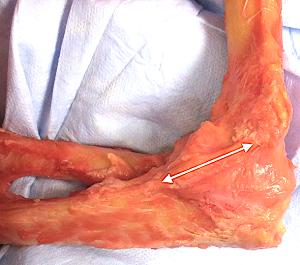
The elbow is a hinge joint between the upper arm bone, which is called the humerus, and the lower arm bones, which are called the radius and the ulna. The ulna is on the inside of the elbow, also called the medial side. The radius is on the outside of the elbow, also called the lateral side. For the elbow to function normally, it is stabilized by strong ligaments on both the inside and the outside.These are called the collateral ligaments. These ligaments prevent the elbow from bending to the side. A ligament is a band of connective tissue that connects two bones together. In the elbow, the inside ligament is called the medial collateral ligament or the ulnar collateral ligament. The outside ligament is called the lateral collateral ligament or the radial collateral ligament. These ligaments can be injured by dislocations of the elbow, fractures of the elbow, surgery upon the elbow, or repetitive overuse. In the picture the white arrow shows the ulnar collateral ligament.
Baseball Pitching
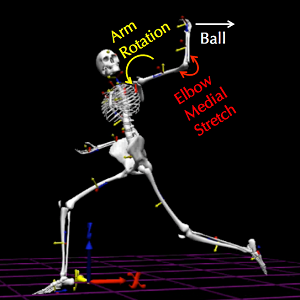
The overhand baseball pitch is among the fastest and highest stress athletic-motions known. Most of the speed of the baseball pitch is produced in the legs and trunk. This speed is then transferred into the arm as the arm is cocked. The arm then rotates and accelerates and the ball is released. During this cocking process, the inside of the elbow experiences “stretching” forces, while the outside of the elbow experiences “compressing” forces. The inside ligament, the ulnar collateral ligament, keeps the inside of the elbow from stretching apart. The ulnar collateral ligament is important for pitching speed.
Within this motion, rotational speeds exceed 7000 degrees per second. These forces exceed the strength of the ligament. Because of these forces, pitching leads to pain and injury within the upper extremity in 25-50% of youth pitchers.
Tears of the ulnar collateral ligament areone of the most common injuries in pitchers. Pitchers who tear this ligament often lose pitching speed and have pain on the inside of their elbow. Often they are unable to continue pitching because of the ligament tear.
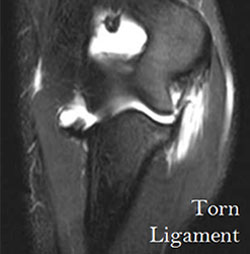
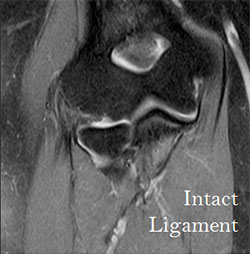
Treatment for ulnar collateral ligament tears
Treatment for an ulnar collateral ligament tear is customized to the patient. Dr. Chalmers may recommend rest, anti-inflammatory pills, physical therapy, or injections. In some pitchers the muscles of the inside of the elbow can be strengthened to off load the ligament. With rest, in a partial tear, the ligament can heal.Dr. Chalmers also has partners that can perform injections of concentrated growth factors to speed the healing process. These injections, called "Platelet-rich plasma" or "PRP", may be helpful. If pain and inability to pitch continue, Dr. Chalmers may recommend surgery.
Tommy John Surgery
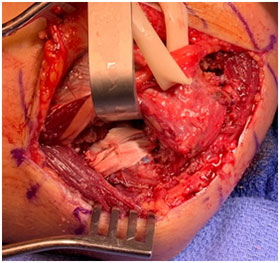
Surgery to restore the ulnar collateral ligament is commonly called “Tommy John” surgery, named after the pitcher on which the procedure was first performed. In this procedure the ligament is either repaired or reconstructed with a tendon graft. Forearm tendon graft and cadaver tendon graft can both be used. The tendon graft is placed in the same location as the normal ligament and fixed to the bone. Over time, the body then transforms the tendon graft into a normal ligament. This process can take over a year. Most pitchers are not able to return to competitive pitching after this procedure for over a year. If the ligament can be repaired and a graft is not needed, the healing process is much quicker. With a repair, most pitchers are able to return to competitive pitching within six months. After surgery, pitchers undergo extensive rehabilitation. Problems related to surgery, including damage to the nearby ulnar nerve, are infrequent but can occur. Overall, ulnar collateral ligament surgery is very successfully procedure, with over 90% of pitchers able to return to pitching.
Click here to download the PDF.
You will need the Adobe Reader to view and print these documents 
